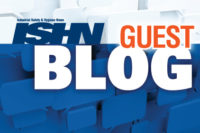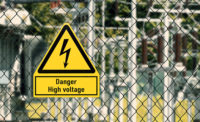ANSI Z535 (2011)
ANSI Z535 standards to visually alert people to hazards were revised in September 2011. Z535 is comprised of six standards: safety colors; environmental and facility safety signs; criteria for safety symbols; product safety signs and labels; safety tags and barricade tapes (temporary hazards); and, product safety information in product manuals, instructions, and other collateral materials.
In September, 2013, OSHA incorporated by reference ANSI Z535 (2011) into OSHA standard (1910.145) specifications for accident prevention signs and tags. Prior to the update, 1910.145 referenced a 1967 ANSI standard. Although old signs may still be used, 1910.145(a)(2) requires that all new signs and replacements of old signs shall be in accordance with current specifications.
Because Z535 was incorporated by reference into an OSHA standard, these standards may be read online free (no print or download options). Visit http://ibr.ansi.org/ to connect to the standards.
OSHA HazCom (GHS)
Employers were required to train employees on new GHS label elements by December 1, 2013. June 1, 2015, is the deadline for chemical manufacturers, importers, distributors and employers to comply with all modified provisions of the OSHA 2012 HazCom standard. June 1, 2016, is the deadline for all employers to update alternative workplace labeling and provide additional training, as needed. Transition to new chemical labels in the workplace is moving slower than OSHA planned, but change continues. Annual employee refresher training on new chemical labels is not required by OSHA but is a best practice. Particularly, ongoing training (formal and informal) should continue until employees fully understand pictograms and hazard/precautionary statements.
Technology improvements
Employers can order ready-made signs and labels from safety product companies. When a large number of new or replacement signs or labels are needed in the workplace, now occurring in many workplaces, and particularly when site-specific wording is needed on signs and labels, employers can use their own sign and label maker. Enhancements in color printer technology easily achieve color standards and color tolerances specified by ANSI Z535.
Visual workplace
Workplaces are expanding visual information. “Story boards” covering daily production, quality, safety, and other topics usually command their own space on the production floor. Static safety posters on the shop floor are being replaced with large computer screens that show safety videos
Product liability/due diligence
During a recent visit at a client’s site I snapped the picture below (Example 1) of a label affixed prominently on the front of a new machine. It doesn’t matter that the words are too small for you to read from this article, pictograms are visual cues to the hazards. Specific precautions include: “Safety windows should be replaced every two years,” “Clean filter screen weekly,” and “Noise levels can exceed 70 dBA.”
The machine is just a lathe that machines metal. I see this type of machine in many workplaces. The 70 dBA statement with ear muff pictogram provides some clue that information is overly cautious. But is it really? The EPA finds that some people will lose hearing at noise levels beginning at 70 dBA. Just because you may adhere to the TLV (85 dBA) or PEL (90 dBA) doesn’t mean risk is absent at a lower dBA.
Hazard information is generally tucked away in a machine operator’s manual, if available at all. Modern technology and guidance (i.e. ANSI) to create labels pulls the information from this relative obscurity and smacks it in front of the operator’s eyes. The extent of the information might help shield the manufacturer from product liability claims, or the manufacturer may simply want to let users know of all recognized hazards. Regardless, the label exists and safety pros should be prepared to answer questions about each risk and precaution presented.
Label information triggers other issues. What happens if a pro ignores label information and something goes wrong and an employee is injured as a result? How will similar, but older, machines that lack the label be treated? Should pros assume that the label information covers all recognized risk for the machine? For example, a label does not include any mention of electromagnetic frequency (EMF) risk during operation of the machine. Is EMF from the machine a recognized risk?
Not more than ten feet away from the label shown previously is a new, simple and small machine manufactured in Germany affixed with the label shown above in Example 2. A supporting label on the machine, written in several languages, states that persons with a cardiac pacemaker must remain a minimum of 1 meter away from the machine inductor, i.e. heating coil. Employers in Europe are required to measure electromagnetic field (EMF) energies and take appropriate health and safety precautions. There is no comparable law in the U.S., but safety pros should recognize that EMF health and safety risks exist.
A label should trigger questions and actions. Actions include determining if all employees, and not just the machine operators, should be trained on EMF health and safety risks, for instance. Is there an EMF policy and procedure? Should other machines or devices in the workplace be measured and labeled for EMF hazards and precautions?
Rapid transformation to new signs and labels is occurring in workplaces. Everyone needs to adjust to the new information. Safety pros should stay ahead of changes.







